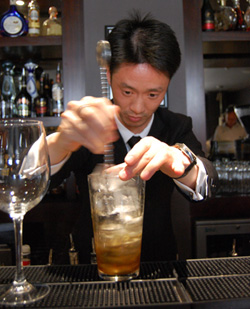Say to your average bartender:
“I’ve found a spirit that has hundreds of years of history and heritage, is produced in small amounts and has arcane production regulations”
And you are likely to lose your hand at the wrist.
However, one category bucks this trend. Despite having all of these and several other geek-inspiring qualities, Armagnac continues to exist in relative obscurity, overshadowed by its hip-hop cousin, Cognac.
Armagnac 101

Armagnac is produced in a relatively small region of France south of Bordeaux.
It is an eau-de-vie that celebrated its 700th birthday last year – the veracity of which claim is backed up by records in Vatican archives dated 1310.
Around 95% of the time, Ugni Blanc, Baco22A, Folle Blanche or Colombard grapes are used to create the wine that is distilled to produce Armagnac. This wine is typically very acidic, of low ABV (7-9%) and contains no preservatives.
The vast majority of Armagnac is produced using continuous distillation, and then goes on to be aged in Limousin oak barrels. After ageing, the various distillates are blended in what is often described as the most important part of the production process. This blending allows each Armagnac ‘House’ to create distinct styles of spirit.
Armagnac Today
 It’s probably safe to say that ten years ago, both Armagnac and Cognac were largely the preserve of cigar smoking, after-dinner-sipping men.
It’s probably safe to say that ten years ago, both Armagnac and Cognac were largely the preserve of cigar smoking, after-dinner-sipping men.
While this is still true to some extent, Cognac was thrust into the larger public consciousness when rap artists started drinking it, and using ostentatiously designed XO bottles as a bling extension.
This, along with an ‘older, flashier and more expensive is better’ reputation has caused Cognac brands to ‘go large’ in the packaging and pricing stakes. This never happened to Armagnac and so you can get a good, aged bottle for far less than that of a corresponding Cognac.
Despite this fact, consumption of Armagnac in the UK currently sits at just 33,000 cases, most of which remains the preserve of the after dinner drinker.
The future of Armagnac
At a recent workshop hosted by Bibendum Spirits and Samalens Armagnac, a group of bartenders discussed the category, its strengths and also potential barriers to its growth.
As ever, education seems to be the key.
Bartenders who know and use the spirit reported customers to be receptive to trying Armagnac if its differences to Cognac were explained, with a more attractive price point helping this process.
 However, bartenders who did not have solid product knowledge lacked the confidence to encourage customers to experiment, especially when dealing with the more expensive end of the range.
However, bartenders who did not have solid product knowledge lacked the confidence to encourage customers to experiment, especially when dealing with the more expensive end of the range.
As an after dinner spirit sold to customers who are used to buying Cognacs, a solid understanding of both categories is vital if Armagnac’s lower prices, and therefore better GP, is to be exploited.
The discussion then turned to Armagnac’s use in cocktails – something that is likely to appeal to a much larger range of bars than after dinner drinking.
Again, a lack of knowledge probably acts as a barrier to using Armagnac as a cocktail ingredient. Also, the perception that it should not be ‘adulterated’ with other ingredients may play a role – an opinion that has, and still does to some extent, afflict single malt whiskies.
However, in more and more cocktail competitions, single malts are being used, both as a flavour accent, and also because their heritage can add to the overall ‘story’ of a competition entry cocktail.
There is no reason why this can’t also be true of Armagnac, and indeed Samalens have recently launched their ‘Single’ range, made with one grape variety and bottled with an age statement as opposed to the usual VS/VSOP categorisation that is strongly reminiscent of Scotch.
Bartenders were then invited to create a cocktail using the Samalens range, showing its versatility as a cocktail ingredient and how they would exploit its flavour profile (see video below for Stuart Hudson of Kanaloa’s drink).
With some thought, category learning and customer engagement, Armagnac can be a profitable spirit to sell for sipping. It can also give bartenders another category, steeped in history and heritage, to explore when creating cocktails.
You may not see it on MTV, but Armagnac is probably all the better for it.
Stuart Hudson makes his ‘Single Fizz’

